The Hidden Impact of Water Damage on Indoor Air Quality
Your home is your sanctuary, and the quality of the air you breathe within its walls can significantly impact your health and well-being. The Hidden Impact of Water Damage on Indoor Air Quality. While water damage may seem like a straightforward issue, its connection to indoor air quality (IAQ) is often underestimated and, in some cases, hidden from plain sight.
In this exploration of the lesser-known consequences of water damage, we delve into the intricate relationship between moisture intrusion and IAQ. Water damage, whether caused by floods, leaks, or plumbing mishaps, can unleash a chain of events that affect the very air you breathe. It provides the perfect breeding ground for mold, a notorious IAQ villain. Mold spores, mycotoxins, and allergens can silently infiltrate your indoor environment, leading to a host of health problems.
Join us on this journey to uncover the hidden impact of water damage on IAQ, and discover how proactive prevention, proper remediation, and maintenance practices can ensure that your indoor air remains a source of health and vitality. Your understanding and actions may just be the key to a healthier and happier home.
Understanding Water Damage and Its Consequences
Water damage is a multifaceted problem that can result from various sources, including natural disasters like floods, burst pipes, plumbing leaks, or even a faulty roof. While the immediate impact of water damage is often visible and concerning, its long-term consequences are equally significant and can go unnoticed for an extended period. Let’s delve deeper into the understanding of water damage and its far-reaching effects:
A. Causes of Water Damage:
- Water damage can occur due to various factors, such as heavy rainfall, storm surges, plumbing failures, appliance malfunctions, or inadequate home maintenance.
- Understanding the root causes of water damage is crucial for effective prevention and mitigation.
B. Immediate Impact:
- In the immediate aftermath of water damage, visible signs include soaked carpets, damaged walls, and standing water.
- Immediate action is required to stop the source of water intrusion and initiate drying processes to prevent further damage.
C. Hidden Consequences:
- Water has a way of infiltrating hidden spaces within your home’s structure, such as wall cavities, subfloors, and insulation.
- The hidden moisture can lead to long-term structural damage, rot, and the development of harmful microorganisms.
D. Mold Growth:
- One of the most concerning consequences of water damage is the potential for mold growth.
- Mold thrives in damp environments and can start to develop within 24-48 hours of water exposure, making it a hidden threat.
E. Impact on IAQ:
- The presence of mold and excess moisture due to water damage can significantly deteriorate indoor air quality (IAQ).
- As mold releases spores, mycotoxins, and allergens into the air, occupants may experience health issues.
Understanding the various facets of water damage and its hidden consequences is the first step in addressing this critical issue. In the next sections, we will explore how water damage can affect indoor air quality, the health implications, and strategies for prevention and remediation to ensure a healthy living environment for you and your loved ones.
Mold and IAQ: The Link You Need to Know
Mold, often hidden behind walls, ceilings, or within damp materials, is a common consequence of water damage that poses a substantial threat to indoor air quality (IAQ). Understanding the connection between mold and IAQ is essential to grasp the hidden impact of water damage on your living environment:
A. Mold Growth and Reproduction:
- Mold is a type of fungi that thrives in moisture-rich environments. When water damage occurs, it provides the ideal conditions for mold growth.
- Mold reproduces by releasing tiny airborne spores, which can be easily inhaled or settle on surfaces.
B. Health Risks Associated with Mold:
- Exposure to mold spores, mycotoxins, and allergens can lead to a range of health issues, especially for individuals with allergies, respiratory conditions, or compromised immune systems.
- Common health problems linked to mold exposure include nasal congestion, throat irritation, coughing, wheezing, skin rashes, and exacerbation of asthma symptoms.
C. Mold-Related IAQ Problems:
- Mold in indoor environments can lead to a decline in IAQ. As mold releases spores and toxins into the air, it can contribute to poor indoor air quality, causing discomfort and health concerns for occupants.
D. Hidden Mold Growth:
- Mold often grows in concealed areas, making it challenging to detect. By the time visible signs of mold are evident, it may have already spread extensively.
- Hidden mold can compromise IAQ without homeowners even realizing it.
E. Preventive Measures:
- To prevent mold growth and protect IAQ, addressing water damage promptly is crucial. Drying affected areas within 24-48 hours is essential to inhibit mold development.
- Routine inspections and maintenance can help identify and address water intrusion issues before they lead to mold problems.
Understanding the link between mold and IAQ underscores the importance of swift action when water damage occurs. In the following sections, we will explore how water damage can impact IAQ further and discuss preventive and remediation strategies to maintain a healthy living environment.
How Water Damage Affects IAQ
Water damage has a profound impact on indoor air quality (IAQ) through several interconnected mechanisms:
A. Excess Moisture:
- Water damage introduces excess moisture into your home, creating conditions conducive to mold growth and the proliferation of other indoor pollutants.
- High humidity levels resulting from water damage can make indoor spaces feel uncomfortable and exacerbate IAQ issues.
B. Mold Growth:
- Excess moisture from water damage provides a breeding ground for mold, which releases spores and mycotoxins into the air.
- Mold can quickly spread throughout your home, hidden behind walls or within building materials, compromising IAQ.
C. Airborne Contaminants:
- Mold spores, mycotoxins, and other indoor pollutants can become airborne, leading to respiratory and allergic reactions among occupants.
- Poor IAQ can contribute to symptoms like sneezing, coughing, congestion, and even more severe health issues over time.
D. Odor and Mustiness:
- Water damage can also lead to persistent odors and a musty smell, affecting the overall comfort and freshness of indoor spaces.
- These odors can be unpleasant and indicative of underlying IAQ problems.
Understanding these mechanisms is essential for homeowners to grasp how water damage impacts IAQ. In the next section, we will discuss the health implications of poor IAQ resulting from water damage.
Health Implications of Poor IAQ
The health consequences of poor IAQ stemming from water damage and mold growth are substantial:
A. Respiratory Issues:
- Individuals exposed to mold and airborne contaminants may experience respiratory problems such as coughing, wheezing, and shortness of breath.
- Mold allergies can be triggered or worsened by poor IAQ.
B. Allergies and Asthma:
- Mold spores and other indoor pollutants can exacerbate allergies and asthma symptoms, leading to discomfort and reduced quality of life.
- Children, the elderly, and individuals with pre-existing respiratory conditions are particularly vulnerable.
C. Long-Term Health Risks:
- Prolonged exposure to poor IAQ can lead to more severe health issues, including chronic respiratory conditions and immune system disorders.
- Early recognition and mitigation of IAQ problems are crucial for preventing long-term health risks.
D. Well-Being and Productivity:
- Poor IAQ can also impact general well-being and productivity, affecting your ability to focus and perform daily tasks effectively.
Recognizing these health implications underscores the importance of addressing water damage promptly and taking proactive measures to improve IAQ. In the following section, we will provide practical guidance on prevention, remediation, and IAQ improvement.
Prevention, Remediation, and IAQ Improvement
To safeguard your indoor air quality and overall health, consider the following steps:
A. Preventing Water Damage:
- Regularly inspect your home for potential sources of water damage, including leaks, roof issues, and plumbing problems.
- Invest in proper insulation and moisture barriers to protect against water intrusion.
B. Early Detection:
- Be vigilant in detecting signs of water damage, such as stains, discoloration, or a musty smell. Promptly address any issues you discover.
C. Swift Action:
- In the event of water damage, take immediate action to stop the source of water intrusion and initiate drying processes.
- Engage professional structural drying services to ensure thorough drying and prevent mold growth.
D. Mold Remediation:
- If mold is present, seek professional mold remediation services to safely and effectively remove the mold and improve IAQ.
- Ensure that affected areas are thoroughly cleaned and decontaminated.
E. IAQ Improvement:
- Invest in IAQ improvement measures such as proper ventilation, air purifiers, and dehumidifiers to maintain a healthy indoor environment.
Taking these preventive and remediation measures can significantly enhance your IAQ and minimize the health risks associated with water damage and mold growth. In the final section, we’ll summarize the key takeaways and emphasize the importance of proactive measures.
Conclusion
The hidden impact of water damage on indoor air quality cannot be underestimated. Excess moisture, mold growth, and airborne contaminants resulting from water damage can lead to a range of health issues and affect your overall well-being.
Recognizing the signs of water damage and taking swift action is crucial to prevent IAQ problems. Investing in professional structural drying and mold remediation services can make a significant difference in restoring your indoor environment to a healthy state.
Prioritizing IAQ not only ensures a healthier and more comfortable living space but also contributes to your long-term well-being. By following the guidance provided in this blog, you can proactively protect yourself and your family from the hidden impact of water damage on IAQ, creating a safer and more enjoyable home environment.

